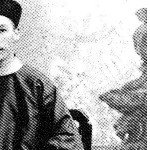In the book “The Empire of Necessity: Slavery Freedom and Deception in the New World”, historian Greg Grandin
tells the story of the slave ship rebellion that inspired “Benito Cereno”, a masterpiece of Herman Melville.
One morning in 1805, off a remote island in the South Pacific, Captain Amasa Delano, a New England seal hunter crossed with a Spanish vessel in difficulty. Climbing aboard to help the crew, he found 72 Africans, men, women and children, who seemed to be slaves. They just seemed. Actually, they had killed most of the crew and taken the control of the ship.
This amazing story that inspired Melville’s Benito Cereno is the starting point for a broad and deep research on slavery and freedom in the Americas. With an extensive research conducted in four continents, the historian Greg Grandin, the acclaimed author of Fordlandia, explores the multiple forces that culminated in this extraordinary insurrection. Grandin portraits the terrible “Middle passage” (the Atlantic crossing from Africa to the Americas), the exhausting and freezing hiking of slaves through the Andes, and the impact of religion on their behavior.
Grandin also follows Delano across the Pacific in search of seals and portrays a generation of seamen who were informally colonizing the islands of South America.
The Empire of Necessity: Slavery Freedom and Deception in the New World
About the author
Greg Grandin is the author of a number of prize-winning books, including most recently Fordlandia, about the factory built by Henry Ford in the Brazilian jungle. A professor of history at NYU, Grandin also served as a consultant to the United Nations truth commission on Guatemala.
See HCS-Manguinhos new Issue: “Oceans and seas: history, science, policy.”
For articles in English and Portuguese related to slavery, please see:
Read, Ian. “A triumphant decline?: Tetanus among slaves and freeborn in Brazil.” Hist. cienc. saude-Manguinhos, Dec 2012, vol.19, supl.1, p.107-132
Kaori Kodama; Tânia Salgado Pimenta; Francisco Inácio Bastos; Jaime Gregorio Bellido. “Slave mortality during the cholera epidemic in Rio de Janeiro (1855-1856): a preliminary analysis.” Hist. cienc. saude-Manguinhos vol 19 supl.1 Rio de Janeiro Dec. 2012
Florentino, Manolo and Amantino, Márcia. “Uma morfologia dos quilombos nas Américas, séculos XVI-XIX.” Hist. cien. saude-Manguinhos, Dez 2012, vol. 19, suppl. 1 p. 259-297.
Symanski, Luís Cláudio P. and Gomes, Flávio. “Arqueologia da escravidão em fazendas jesuísticas: primeiras notícias da pesquisa.”Hist. cienc. saude-Manguinhos, Dez 2012, vol.19, supl. 1, p.309-317.












